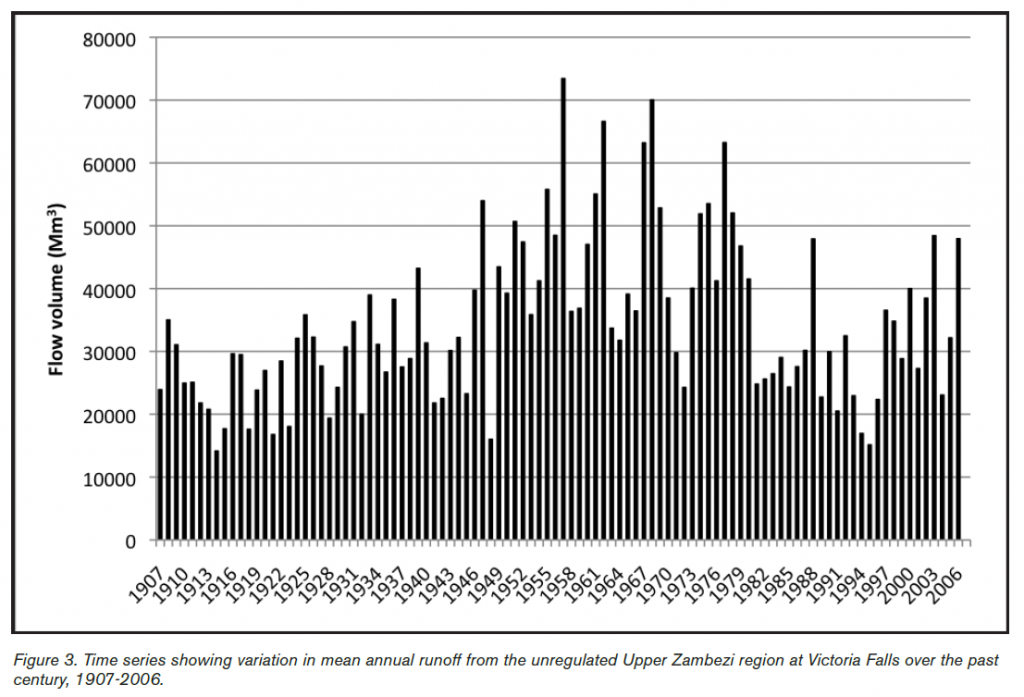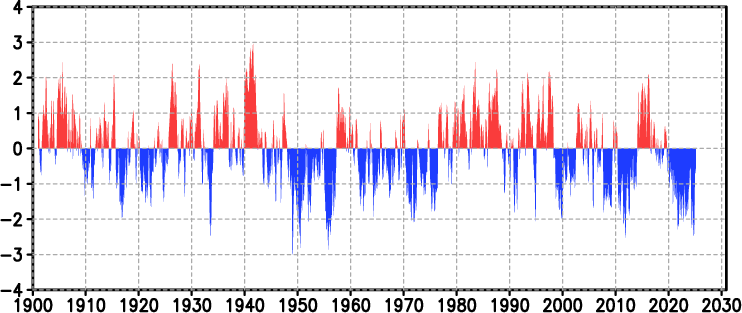Victoria Falls ignoring IPCC science: Sometimes more water, sometimes less
By Die kalte Sonne
(German text translated by P. Gosselin)
German Spiegel Online on 7 December 2019:
Victoria Falls in Zimbabwe and Zambia: “It’s the longest dry period that we have ever had.”
The Victoria Falls are considered to be the widest waterfall in the world. But instead of the usual quantities that plunge into its depths, there is a drought – tourists have also gone absent. The mood there is gloomy.”
And, of course, it is being immediately attempted to explain the water flow with man-made climate change. The Guardian wrote on the same day:
Data from the Zambezi River Authority shows water flow at its lowest since 1995, and well under the long-term average. Zambian president, Edgar Lungu, has called it ‘a stark reminder of what climate change is doing to our environment’.”
Spiegel calls it the worst drought ever. The Guardian calls it the worst drought since 1995. That’s a small difference.
As always, it’s best to look at the hard data. Here we look into a report by Richard Beilfuss from 2012 (pdf here), which has the following exciting title:
A Risky Climate for Southern African Hydro: assessing hydrological risks and consequences for Zambezi River Basin Dams “
The report checks whether dams along the Zambezi River are always supplied with sufficient water. In the event of water shortages, the turbines would quickly stop and the production of electricity would fail. Therefore, Beilfuss looks back into the hydrological past of the Zambezi region to better understand the variability of rainfall. He embeds his research in the usual climate change narrative, which we can overlook.
We are particularly interested in the facts presented by Beilfuss. From his summary:
The Zambezi River Basin has one of the most variable climates of any major river basin in the world, with an extreme range of conditions across the catchment and through time. Average annual rainfall varies from more than 1,600 mm per year in some far northern highland areas to less than 550 mm per year in the water-stressed southern portion of the basin.
Runoff is highly variable across the basin, and from year to year. The entire Zambezi River Basin is highly susceptible to extreme droughts (often multi-year droughts) and floods that occur nearly every decade. Droughts have considerable impact on river flows and hydropower production in the basin. For example, during the severe 1991/92 drought, reduced hydropower generation resulted in an estimated US$102 million reduction in GDP, $36 million reduction in export earnings, and the loss of 3,000 jobs.”
Oh, man. The Zambezi area is already well known as a highly variable rain area. Can a drought be surprising at all? Why is this drought man-made in 2019, when there have apparently always been droughts in the past?
Not CO2 related
A little later in the report we also find a flow diagram for the Victoria Falls:

Figure: Water flow rate-volume at the Victoria Falls an den 1907-2006. Source: Beilfuss 2012 (immediately pdf)
We see a strong variability from year to year. On a scale of several decades, the period 1940-1980 is characterized by particularly high flow rates. The early 20th century was rather dry. A coupling to the 60-year-old ocean cycle offers itself. The Pacific is far away, but the wet Zambezi phase fits quite well into the negative PDO:

Figure: The Pacific Decadal Oscillation (PDO). Source: By Giorgiogp2 – Own work, CC BY-SA 3.0, https://commons.wikimedia.org/w/index.php?curid=13297650
Working hypothesis: Whenever the PDO is positive, the flow at the Victoria Falls decreases. And what is PDO doing right now? It is positive. It fits!

Abbildung: PDO bis Ende 2019. Quelle: daculaweather.com
It’s a pity that so few take the trouble to first check the natural precipitation dynamics and possible correlations.
It’s so much easier to simply hold the universal rogue CO2 reflexively responsible for every observed rain anomaly. Naturally, this quick fix is not sustainable. In this specific case, it was probably just a matter of dark climate alarmist background music for the climate conference in Madrid.





“Victoria Secrets Exposed”
that’s redundant //:o]
In 1872, Scottish meteorologist and astronomer Charles Meldrum, showed that periods of minimal sunspots also corresponded to periods of minimal rainfall at tropical weather stations. Sir Norman Lockyer showed this was also the case for several meteorological stations in Ceylon and in India.
We are currently in a very low sunspot era transitioning between solar cycle 24 and 25.
Vic falls low tide functions as an illustration of this phenomenon. Nothing new; no climate crises.
550 mm is approximately 20 inches of rain.
550/25.4 = 20 plus inches.
Not a lot of precipitation.
There’s a himp in the flow volume graph from 1946 to 1979, close to those years. To the left and the right have flows ranging less than the 1946 to 1979 years, if folded, the overlap would more or less match.
The PDO index that follows those same years has a negative index with the lowest negative numbers.
Those were the years of above ground/below ground nuclear detonations, Bikini Atoll hydrogen bomb gone wild by the US, more tests in China, India, Russia, France, Britain, Pakistan, and North Korea. All conducted nuclear testing totaling 2056 with two used during wartime.
Not that all of those detonations caused the PDO to increase or decrease, correlation is not causation, but the corresponding decreases follow the pattern with increased amplitudes during the years of nuclear device testing.
It is interesting, not that it means anything at all, but there seems to be a fit there too.
Regarding the Stürmer, pardon, I mean, the Spiegel:
Several months ago, I discovered an excellent journalist named Thomas Röper who has been living in Russia for over 15 years. He’s specialized in geopolitics and economy. Röper sustains his blog “Anti-Spiegel” in which he picks apart the lies of the mainstream media. I can only recommend it.
[…] P. Gosselin, December 11, 2019 in […]
[…] https://notrickszone.com/2019/12/11/victoria-secrets-exposed-more-falsehoods-by-spiegel-guardian-vic… […]
[…] Victoria Secrets Exposed…More Falsehoods By Spiegel, Guardian… Victoria Falls Variabilit… […]
[…] https://notrickszone.com/2019/12/11/victoria-secrets-exposed-more-falsehoods-by-spiegel-guardian-vic… […]